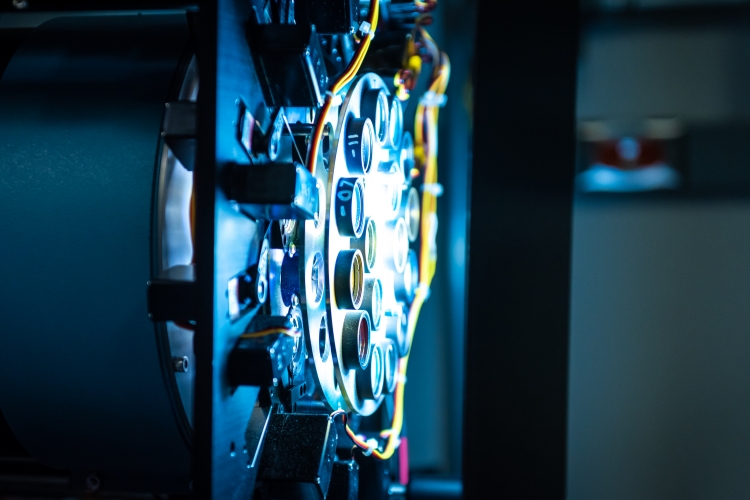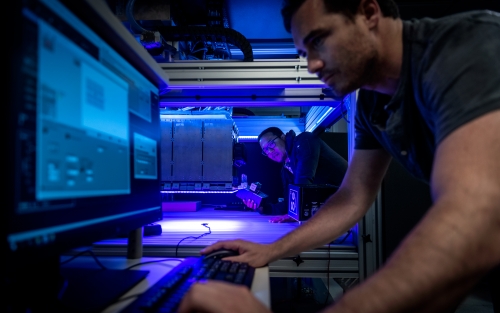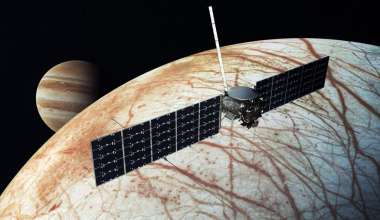Testing Solar Cells at the Edge of Space
As the power source for spacecraft, solar cells perform an important function and need to work as expected on orbit.
An Aerospace team patented a minuscule device that helps them accurately assess the performance of various solar cells before sending them into space.
“We essentially created a solar cell laboratory on a chip,” said Dr. Don Walker, manager of the Energy Devices Section at Aerospace.
Manufacturers are constantly making new solar cells using new technology; these cells need to be tested. This can be done in a lab, with an instrument that mimics the sun. The issue is that each cell type reacts differently to lab-simulated sunlight.
The team needs natural sunlight to test out some reference solar cells, which they can then use to adjust and calibrate their solar simulator. The reference solar cells need to be exposed to sunlight above the ozone layer to replicate conditions in space. That means they need to be tested about 22 miles above the earth.
To accomplish this, scientists have traditionally used either a plane or a large high-altitude balloon. But even a high-altitude plane, such as a Learjet, only flies about 13 miles up. A high-altitude balloon gets the job done, but because the test equipment is large and bulky, it requires a balloon the size of a football field.
Some scientists from Aerospace saw these challenges and came up with an innovative solution. The team, using funding from NASA, figured out how to shrink a solar cell test platform to the size of a quarter. They call it the Aerospace Measurement Unit (AMU).
The AMU is tiny and light, so the team can use a smaller and less expensive balloon that can be flown more easily to the necessary altitude. After the flight the device is parachuted to the ground and taken back to the lab.
The team has flown their patented device several times now and it seems to hit the mark. Solar cell testing just got easier.







